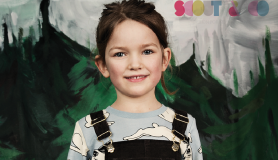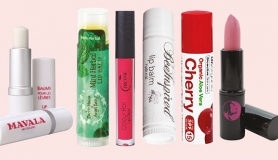The cloth confusion
It’s best to wait until baby is born to find the right nappy as all babies are so different in shape and size! Narrow down the options by thinking about the following:
1) Will you use a tumble drier?
Different fabrics have different drying times. Hanging nappies in the sun whenever possible is recommended, but using a tumble drier will obviously quicken drying times. In our house, cotton and microfibre nappies take a day to dry, hung inside, bamboo and hemp need at least two days.
2) What is your budget? – If you are happy to spend more on a bigger stash, then the drying time becomes less of an issue. We started with around 15 microfibres for daytime use, and five bamboos for nights. Our collection has grown considerably over time, meaning I can wash every other day and still have some ready to go.
3) Will anyone else be changing nappies? – Cloth nappies have changed considerably since we were children and you don’t need to be a master of origami to figure them out. However, some types are easier to use. Before you set your heart on a particular kind, check that everyone involved will be happy to use them too. My husband didn’t know anything about cloth in the beginning but quickly got the hang of them. On the other hand, my mum is still a little overwhelmed by all the colours and shapes and needs everything laid out carefully.
All the options
Which fabric?
Cotton is generally the best all-rounder, and man-made Microfibre is the slimmest. Both absorb quickly and dry fast. However, neither are particularly eco friendly. Bamboo and hemp are the more natural choice, but they are bulkier, absorb slowly and take longer to dry (especially bamboo). They do, however, absorb more and make excellent night-nappies.
Which fastening?
Velcro fastenings (also known as aplix) are excellent for minute adjustments – especially in the early days. Willow had skinny legs as a newborn and Velcro was the only type of closure that allowed us to get a tight enough fit around both waist and thighs. Velcro does need to be secured before each wash (the nappy will have tabs that you simply stick down) otherwise they will attract all kinds of fluff from your machine. Toddlers may find this type of fastener easier to open, which could lead to a messy situation!
Poppers are harder for little fingers to pull open, but won’t give you quite the same flexibility for fine-tuning.
What size?
Sized nappies are exactly as they sound – you start with the smallest for your newborn and gradually buy bigger sizes until potty trained. These nappies are more trim than Birth To Potty (BTP) nappies and their lack of sizing poppers makes them easier to understand. However, once they are too small you have to buy a new set. We started with a couple of Tots Bots Teenyfits for daytimes, and a small stash of Little Lamb size 1 bamboos with a Flip Velcro cover for night. Keep in mind that your baby will grow out of the smallest size very quickly.
BTP nappies have poppers that allow you to adjust their size. This means they do tend to be bulky in the early days (as there is a lot of ‘spare’ fabric) but they should last you. On the downside, rows of poppers can be confusing and may take some people a while to get the hang of. If I’ve made them up ready to go, my husband is quite happy changing Willow. It’s also worth noting that some BTP nappies will still be too big for a newborn and will take time to grow into.
What type?
Flat nappies are more like the traditional cloth of old, although they have improved greatly since then. They come as either a square you fold yourself, or prefolds that have extra layers sewn in. Both are quicker drying and a cheaper option, and both will need a fastener (such as Nappi Nippas). They also need a wrap, like the Motherease Airflow, Rikki, Blueberry Coverall or BumGenius Flip. This system is versatile and cost-effective, as you won’t need to swap the cover at every change.
All In Ones (AIO) are shaped nappies with the absorbent part and the waterproof layer in together. This is the slowest-drying option and must fit well because there is only one line of defense. Any gaps around the leg, and you will likely face leaks. We use BumGenius Freetimes because the flaps open out and so they dry a bit quicker. Tots Bots Easyfits are a sort of hybrid AIO and Pocket (see below), as the nappy is one piece but you do need to tuck the flap in.
Pocket nappies like the BumGenius V4, FuzziBunz and Smartipants are shaped nappies with a ‘pocket’ inside them – which you stuff with the absorbent layer. You can boost this as required, and the separation of layers makes them quicker to dry. They have a waterproof PUL lining sewn in and so do not need a wrap. Once stuffed, these nappies are very easy for newcomers. They only have one line of defense; so can be less reliable than two-part nappies, although we’ve never had any problems.
All In Two (AI2) nappies – also shaped, are generally the most reliable because of the extra line of defense. Some will need a cover, whilst others like Itti Bitti Tutto, and Close Parent Pop-In allow you to fix the layers on the inside so they are more like the Pockets (but without a pocket!).
Little Extras
You will need somewhere to store the dirty nappies, like a nappy bucket. Tape a cotton bud soaked in tea-tree oil to the inside lid to stop any smells. A small wet-bag is ideal for trips out. Use a larger bag at home if you don’t have space for a bucket.
Smells, stains and sunshine
The most common misconception about cloth nappies is the belief that they all end up smelling bad. Ironically, the only time they might end up trapping smells is if they are washed with too much detergent. Nappies should come out of the machine smelling of nothing at all. If they have detergent left in the fibres they tend to do two annoying things. The first is become less absorbent and prone to leaks, and the second is smell bad. Worse still, detergent residue can be harsh on your baby’s skin and can cause nappy rash. It’s best to use around a quarter of your usual amount of detergent, and set extra rinse cycles at the start and end of each wash until all bubbles have gone. New nappies will need several washes before they are fully absorbent, and remember – never use fabric conditioner with cloth.
The most amazing thing I have learned whilst on my cloth journey is the simple power of the sun. Some nappies do end up a bit stained, but hang them outside whilst still damp – even if there is cloud coverage and the UV rays will make stains vanish completely.
Dealing with nappy rash
Cloth nappies are so much kinder on the skin and daughter didn’t suffer a single nappy rash until she started teething at eleven months. Lotions and potions can affect cloth in a similar way to detergent – by clogging the fibres with a waterproof barrier, which then causes leaks. If you do need to use a cream, use a liner, which will protect the nappy.
Final thoughts
It is well worth seeing the nappies “in the flesh” before you buy, and local nappy demos (Nappuccinos) are a great way to do this. Take a look at goreal.org.uk to find one near you. The Nappy Lady runs her own in Farnham, Surrey, and can also offer advice via an online questionnaire (thenappylady.co.uk). If you don’t feel ready to take the plunge, trial schemes are available from some retailers. Your council may also offer incentives to try cloth, so check their website for info.
Armed with the right information, cloth nappies can be a stress-free experience that saves you money and helps to do your bit for the environment. We are so pleased we ignored negative comments and went for it – cloth was the best choice we ever made.






